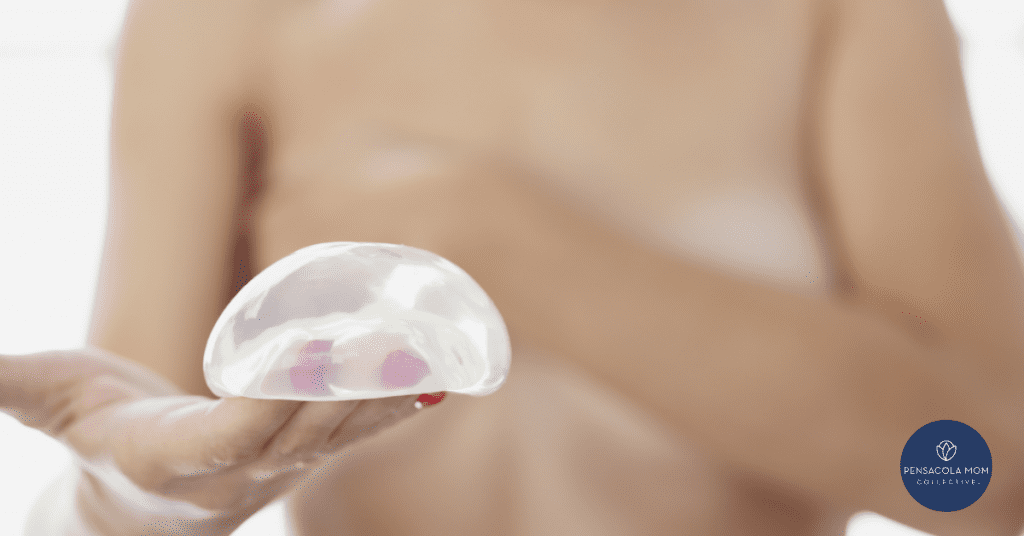
Women are most often the primary medical decision-makers in families, and we do our best to make the best choices – the safest choices for ourselves, our children, and our spouses. We try to be informed.
Unfortunately, we are extremely vulnerable when unsafe products are on the market with hidden dangers of which we and our physicians are unaware.
Certain breast implants fall into that category. They have a shady and shameful past and are a present danger to the patients who have them.
Placement of breast implants is the most common plastic surgery procedure in this country and has been since 2006. Some estimates suggest 1 in every 26 women in this country have implants. These devices can be placed under the chest muscle or on top of the muscle and are most often placed for cosmetic reasons, to reconstruct the breast after breast cancer surgery, or when mastectomy has been undertaken due to a patient having the high-risk breast cancer BRCA gene.
Types of Breast Implants
There are two types of breast implants approved for sale in the United States: saline-filled and silicone gel-filled. Both types have a silicone outer shell. They vary in size, shell thickness, shell surface texture, and shape (contour).
Textured breast implants were sold by Allergan beginning in the late 1990s, in both saline and silicone versions and in various models and sizes. They are different from “smooth” implants in that they have a textured surface. It is the textured version of breast implants that has garnered worldwide attention and concern.
Breast implants are considered medical devices and must be approved by the Food & Drug Administration (FDA) to assure their safety; however, we have learned that despite approval by the FDA, some implants are far from safe.
In fact, one type, Allergan BIOCELL textured breast implants, is associated with a deadly cancer known as Breast-Implant-Associated Anaplastic Large Cell Lymphoma (BIA-ALCL). Even though the World Health Organization recognized this unique signature injury in textured implants in 2016 and created a specific category with specific criteria for it to be diagnosed, the FDA did not request Allergan to do a global recall of the implants until July 2019. Other countries also reacted more quickly to protect consumers than the FDA and prohibited Allergan from selling its dangerous products prior to the FDA recall.
Allergan’s global recall in July 2019 included numerous types and models. A list is available at this link.
What Is the Problem With Textured Implants?
There are several theories about the manner in which the manufacturer textures the implants and how Allergan’s manufacturing may play a role in the development of this potentially deadly lymphoma, including that sharp and jagged particles are left on the surface of the implants and continue to be shed during the life of the implants, thereby setting up an environment of chronic inflammation and cellular damage.
Research is underway, and a number of dedicated surgeons, pathologists, oncologists, researchers, and other specialists are working to learn more about the pathway between Allergan’s textured implants and the development of BIA-ALCL.
FDA Oversight
The FDA likely has too few resources to adequately police the number of products (pharmaceuticals and devices) that it regulates. It has to rely significantly upon drug and device manufacturers to timely and accurately report information about product failures and adverse events. In this instance, it appears that the FDA did not appreciate the magnitude of the risk to human life and health until shortly before the July 24, 2019 recall. Moreover, it did not seem to realize that the problems in this country with textured implants were almost exclusively with Allergan textured implants until that time.
The first case of BIA-ALCL was reported in the literature in the late 1990s, and a smattering of other cases was reported thereafter. During this time, the risk of BIA-ALCL was downplayed in the industry. Very few women were told about the risk prior to the recall.
Women who were told earlier were told that the risk was less than 1:1,000,000-3,000,000 to start. Then that number began changing, and the risk appeared to be greater – from to 1:300,000, 1:30,000, and now, 1:350. The American Society of Plastic Surgeons currently estimates that the greatest risk estimate is 1:2,207.
That is a shockingly dramatic change in the potential risk of development of BIA-ALCL.
Patients deserved to know this critical information to make informed choices about the type of implants to choose or whether to have implants at all. Moreover, the time frame for BIA-ALCL to develop is highly variable, from less than one year to more than twenty years, with most developing 8-11 years after implantation, so there is no “safe” timeframe in which a patient can feel that she is beyond the risk of developing BIA-ALCL.
Where Are We Now?
Women with textured implants, particularly those with a history of breast cancer, have been encouraged to follow up with their physicians about the status of their implants. Many have opted, in consultation with their physicians, to have their implants removed. Others are cautioned to be monitored on an ongoing basis and to look for signs of BIA-ALCL, including asymmetry, pain, swelling, lumps or masses, seromas (fluid collection) around the implant, itching, burning sensations, and rashes.
Have Patients Sought to Hold Allergan Accountable?
At this time, only the Allergan textured implants have been recalled; and, indeed, the vast majority of BIA-ALCL cases in the United States have been associated with Allergan’s products, as shown by the chart above. Hundreds of patients have brought legal claims against Allergan relative to textured implants. There is presently a nationwide multi-district litigation in New Jersey in which claims have been asserted for patients: (a) who have had implants removed (b) are pending implant removal (c) have had a diagnosis of BIA-ALCL with removal, or (d) have died from BIA-ALCL.
Thousands of additional claims are anticipated.
In researching the background of breast implants and Allergan’s products, one finds numerous reports about Donald McGhan, a pioneer in the development of these devices.
McGhan was an engineer and not a medical doctor, and he spent many years developing and selling breast implants. He was dishonest in his business dealings and convicted of fraud and sent to prison. He was also investigated, sued, and penalized by the Securities and Exchange Commission for false reporting and removed as chief executive officer of McGhan Medical Corp, one of the world’s leading breast implant manufacturers.
In fact, McGhan type implants are included in the Allergan recalled implant list. He was also the distributor of the PIP implants which were widely sold in Europe and sold on a more limited basis here.
These implants were filled with commercial-grade, rather than medical-grade, silicone, and resulted in devastating consequences to many of the patients with that type of implant. We like to think of highly educated professionals in white coats, with a dedication to quality and safety, and a wealth of knowledge standing behind the products we and our families consume. Mr. McGhan does not fit the image.
Undoubtedly, few women would have chosen Allergan’s textured implants if they had known at the time of implantation about the risk of BIA-ALCL. For women who have textured implants, they often suffer worry, fear, anxiety, and even guilt about the harm that their breast implants may cause them.
It is particularly cruel for women who have a history of breast cancer and who thought they were “healed.” Now they face another serious threat to their health. Removing the implants for those patients is not a simple removal process and can require a series of more complex procedures with less aesthetically acceptable results.
If you have questions or concerns, it is important to confer with your physician regarding your breast implants and how any specific issues should be addressed.
About the Author:
Virginia Buchanan is a shareholder at Levin, Papantonio, Rafferty, Proctor, Buchanan, O’Brien, Barr & Mougey, P. A. in Pensacola, Florida. She is co-lead counsel in the Allergan national breast implant litigation on behalf of patients.
To learn more: https://www.levinlaw.com/







